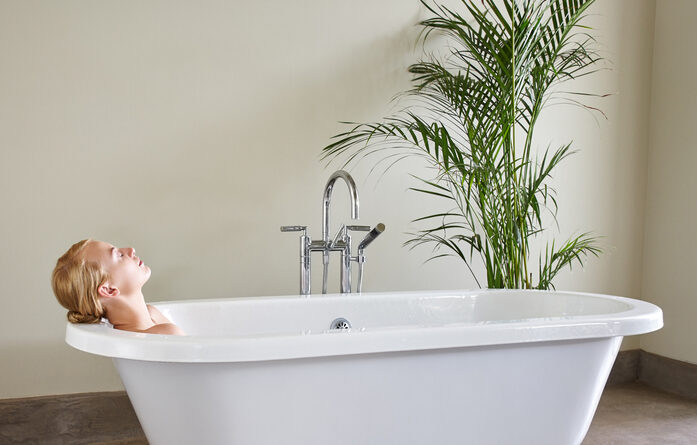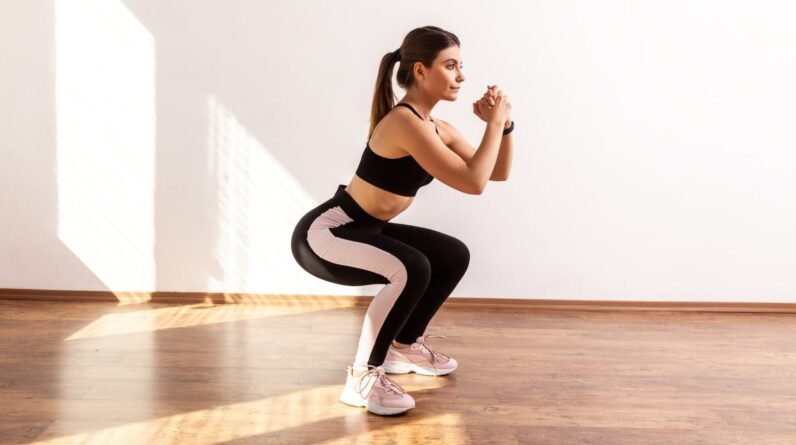
What is an ice bath?
“First, here’s the deal: cold is cold, and an ice bath is a form of cold exposure that where you put a lot of ice into water,” Moss says. You sit in it somewhere from a few seconds to five minutes (Moss notes that most people she coaches aren’t really going in longer than five minutes).
Why are people taking ice baths?
“Basically, the purpose of taking an ice bath is to activate cold shock proteins, and to essentially like it’s a stress on the body to go in the ice,” Moss says. At the gym, she often creates baths with mid-30 degree Fahrenheit water. “We put about 140 pounds of ice into a 100-gallon tub and sit in there for three minutes. Everything is submerged, with a dunk where your head goes all the way under at the beginning and the end,” she says. “It’s kind of like medicine: what is the max benefit you can get with minimal dosage?” That’s why she recommends three minutes.
What are the benefits of an ice bath?
Moss says that ice baths are an intentional stressor, similar to training in the gym. “So, for example, adding weight to a barbell when you do squats, or adding intensity to running, or length to how far you row,” she says. “What you’re afforded by going in that stressful environment is that it’s an opportunity to override your autonomic nervous system. So your fight-or-flight instinct goes off in the cold, and if you’re a normal human you’re like, ‘Get me out of here!'” But then you train your breath, which helps you control that fight-or-flight response. “When you get out, you get hit with a massive dose of dopamine and norepinephrine,” she says. “It also increases autophagy.”
What are the general guidelines?
Two things here are important: Go to a facility with trained professionals, and go for three minutes submerged at 35 degrees Fahrenheit. “If they can’t go that cold or don’t want to go that cold, that’s okay,” Moss says, “but you’re gonna have to go longer in warmer water.” Warmer being a relative term, of course.
During normal times, Moss recommends going to a facility for guidance through the process of sitting in a tub of ice water for three minutes. “Not only can they communicate what might happen to prep you, but also communicate with you while you’re in the ice,” she says. While a lot of people know the basic information, it’s a “very challenging” situation that can be aided with the help of a coach, she says. “I can’t overstate the benefit to that,” she says.
Can you do ice baths at home?
In the meantime, there’s always the DIY route for you to practice this in your wellness-infused home. “If somebody can just go in their shower, put the water as cold as they can tolerate, and stay under it for at least 30 seconds, that’s enough to encourage a beneficial hormonal response,” Moss says. “Where you can go for cold water or cold exposure, do it,” she says. That could also look like walking outside for a bit without a jacket, or jumping in the ocean.
“It’s kind of funny because some people are like, ‘I just don’t do the cold, I’m always cold,’ and I was one of those people. But here’s the interesting thing—physical benefits aside, it really does hit the reset button in your body like no other. It is incredible for mental health and clarity,” Moss says. She notes that she’s taken about 320 people through her breath and exposure program at Deuce, and the therapy can be tailored to the individual. For example, only soaking the hands and feet.
She recommends that anyone with serious health concerns, like strokes or heart disease, shouldn’t do ice baths. And you shouldn’t be doing ice baths every day. “At the end of the day, we’re trying to adapt and to adapt, you’re not going to do the same thing every day,” she says. “You want your body to be able to perform physically and mentally with and without ice, and you want to use it as a tool.”







